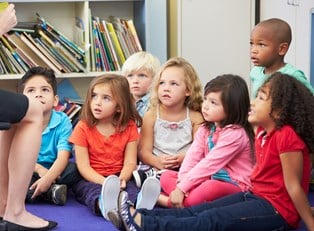Whether you’re an aspiring or current teacher, it can be hard to balance the needs of every student in the classroom when creating lesson plans. Here are a few things to consider about your students when trying to creating meaningful and engaging classroom experiences.
Diversity is about more than skin color.
Every teacher has to balance teaching a group of diverse students. Diversity refers to the differences between people that make them unique. This includes, but isn’t limited to race, socioeconomic status, gender, ethnicity, (dis)ability, age, religion, education level, and personality characteristics. Each of your students will come from different family backgrounds and will have lived through different experiences. Create lessons that celebrate diversity without pinpointing one group of individuals.
Make an effort to learn about your students’ home lives.
When you show that you care about where a student comes from, you allow that student to connect with you in a way that encourages them to learn and grow as an individual. Although there is certainly a point at which there is too personal of a relationship with a student, most students whose teachers have built relationships with their family and have made an effort to inoffensively get to know the child’s lifestyle become more engaged in the classroom.
Don’t make culture just about holidays or food.
Too often when elementary school kids are taught about other cultures or religions, the lessons are based around a holiday or food. For example, Jewish families are often invited into elementary school classrooms to talk about Hanukkah in the winter, but rarely are they invited at other times to talk about other aspects of their religion and culture. This becomes problematic because it teaches kids that cultures are events rather than celebrating cultural differences as complex parts of everyday life.
Understand how classicism and racism affect student learning.
We are used to hearing classist, racist, and sexist stereotypes, but people often don’t think about how those stereotypes affect individuals’ learning. The current education system tends to value white, middle-class culture and learning style and devalues other ways of learning and behaving. As an elementary school teacher, you must realize that families from different races and socioeconomic statuses often have different experiences and ways of approaching learning. You have to learn not to value one style over the other and work with students in a way that doesn’t devalue their family background.
Encourage creativity; don’t ask questions with a single answer in mind.
You’ve probably attended a class during your own education that was similar to this scenario: when a professor asked the class a question, you answered in a way you thought was correct, and the professor shut your answer down – not because you were actually incorrect, but because they had a different answer in their head. This happens easily, but as an elementary school teacher, rather than shutting your student down when they answer differently (but not incorrectly), learn to recognize these occasions and just change the discussion point. This allows your students to express themselves and learn articulation more easily without fear of being incorrect.




